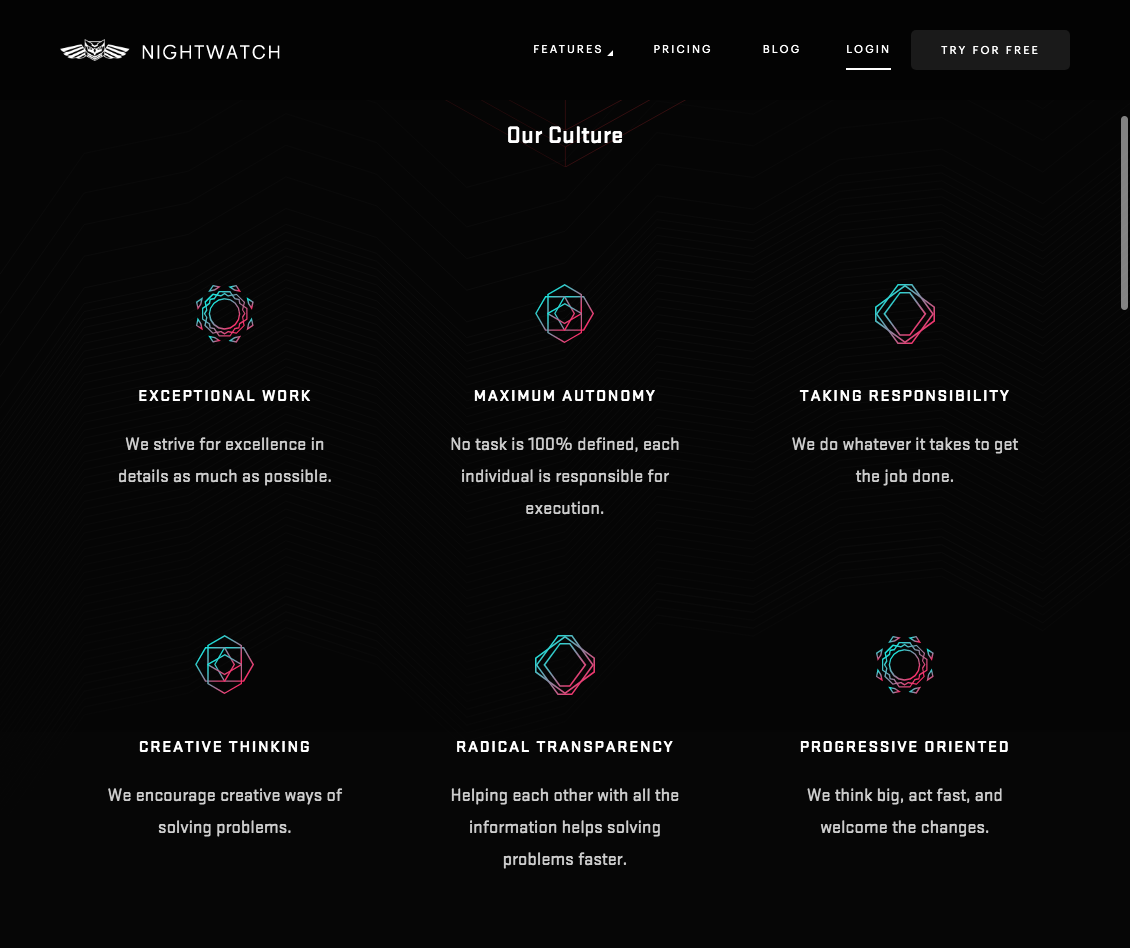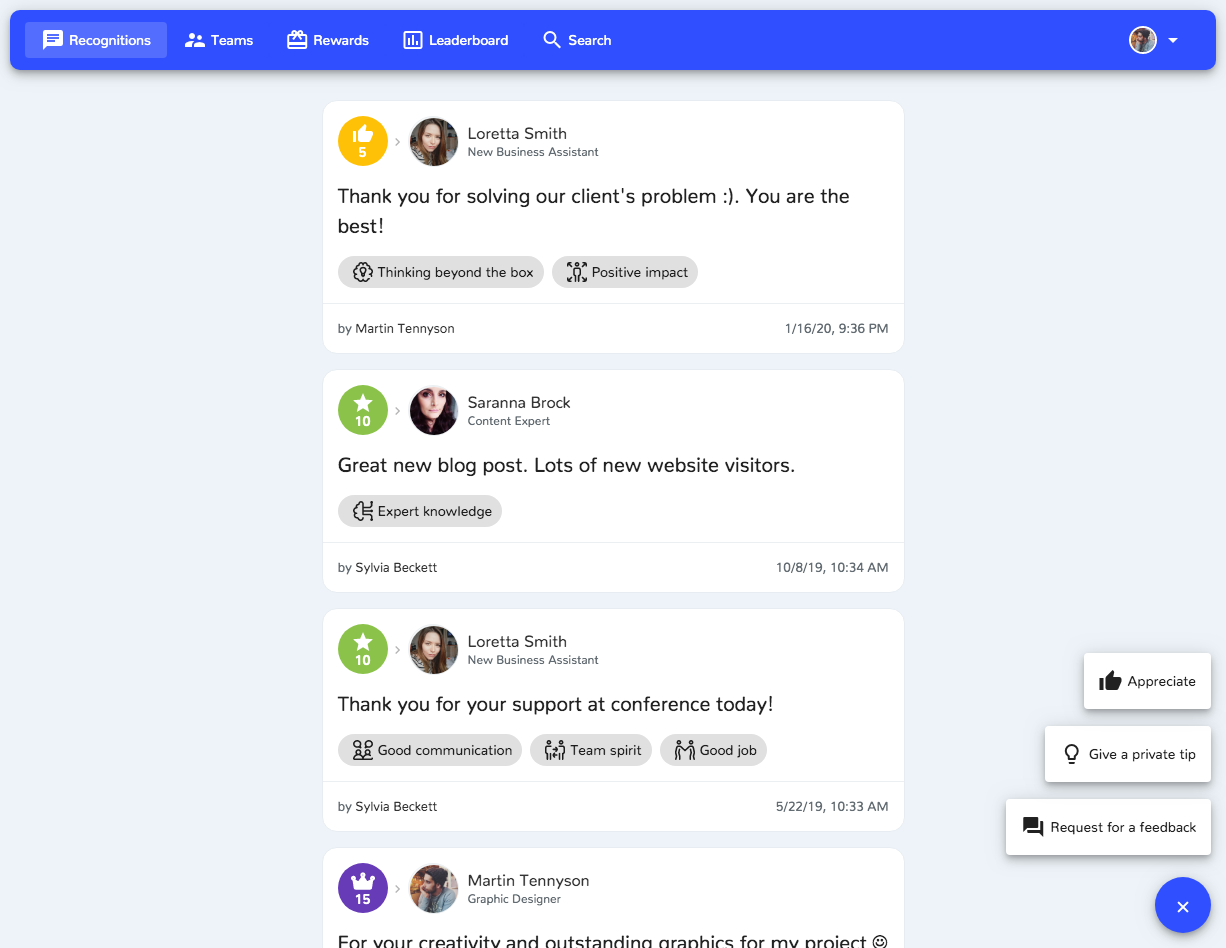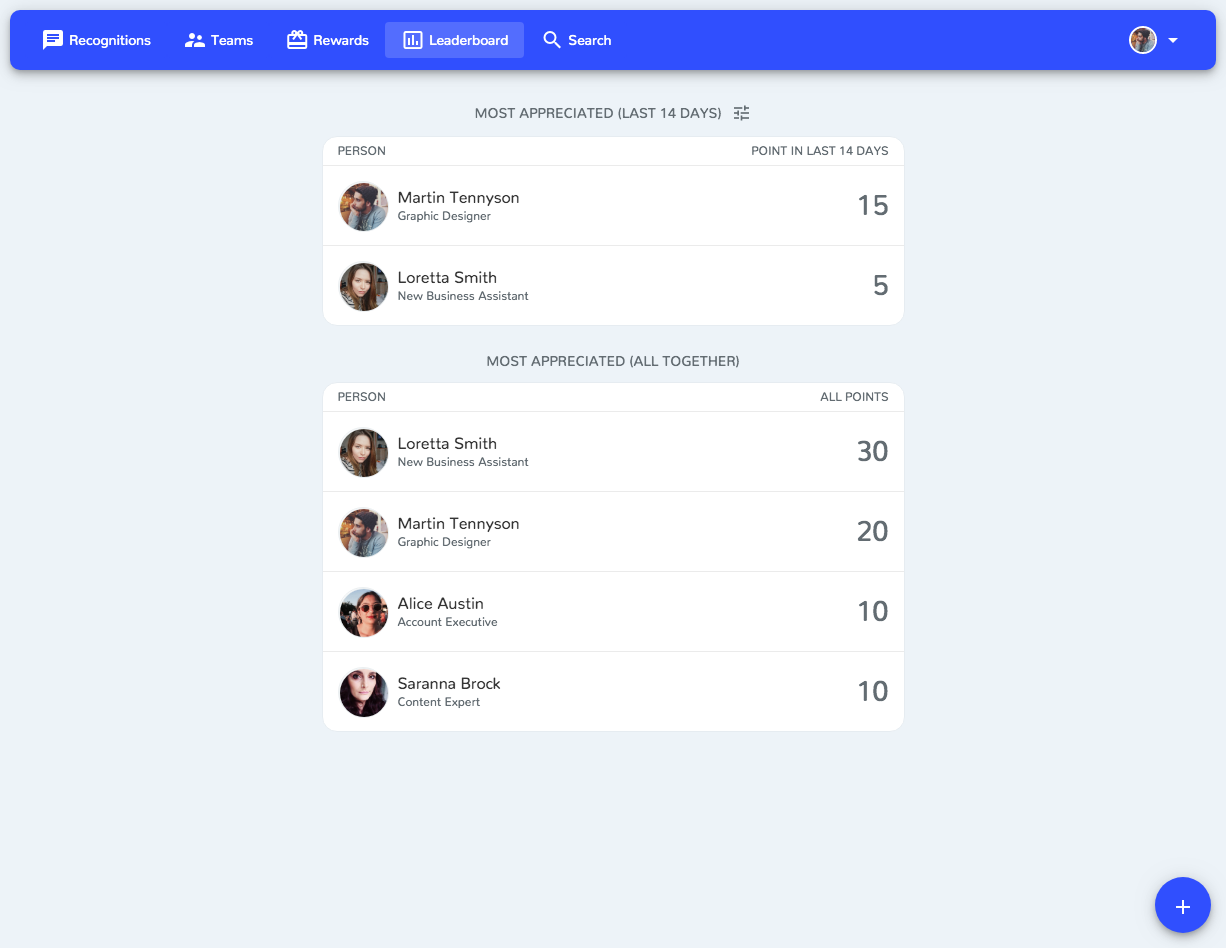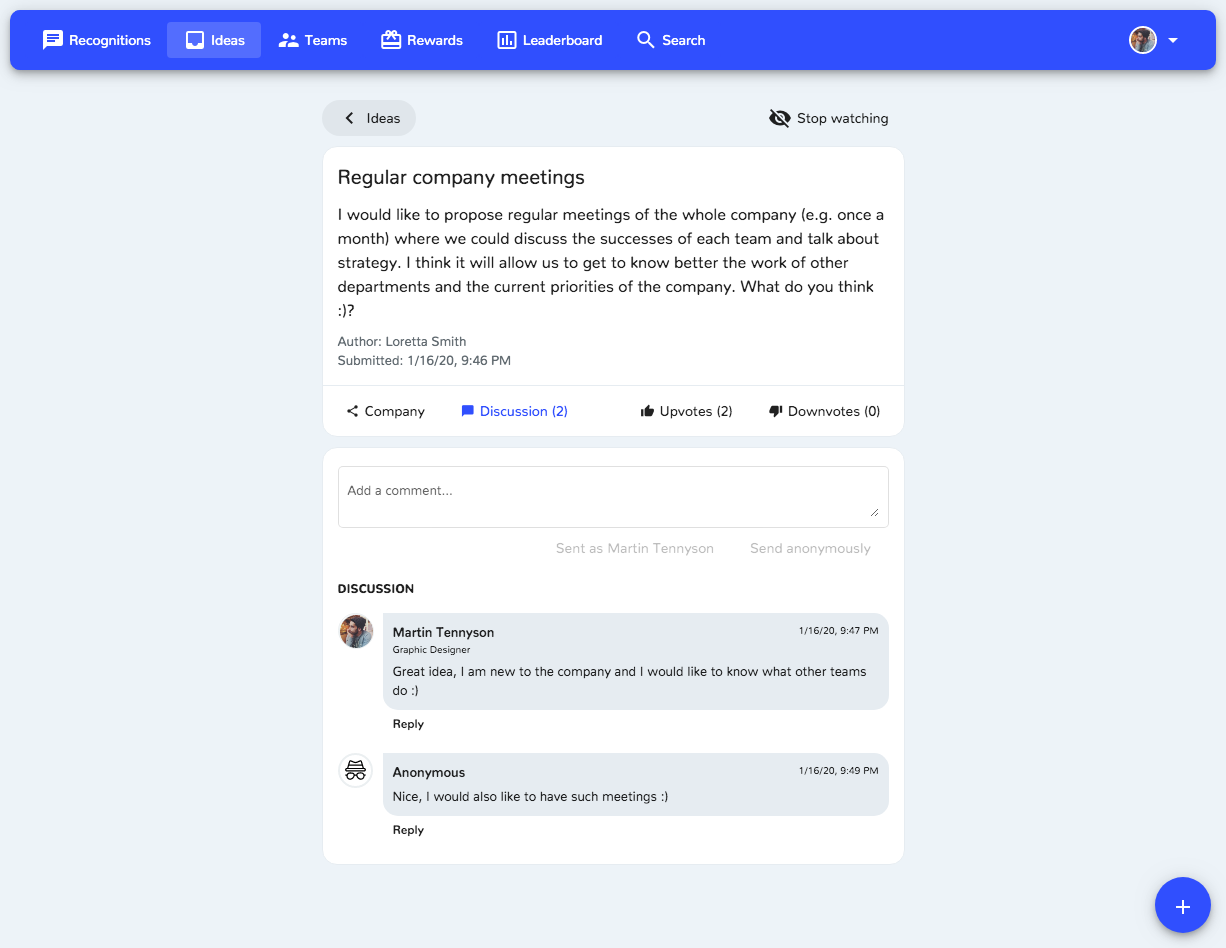

Written by: Arek Ponski

It’s no secret that engaged employees are happy employees. They tend to be super productive, too.
In fact, according to research carried out by the Gallup Organisation, engaged teams reported a 17% increase in productivity, which meant a subsequent 21% increase in business profitability.
Pretty cool, huh?
But what does an “engaged employee” even mean?
According to Gallup, engaged employees are “those who are involved in, enthusiastic about and committed to their work and workplace”.
Studies on employee engagement in the U.S. show that the percentage of workers considered “engaged” reached 34% in 2016, and has been on the rise ever since.
Reduced turnover rate, perceived higher quality of work and health, fewer work incidents are just a few metrics proving that building an employee-centric organization, with the focus on employee engagement, is key to any businesses success.
In this article, we will explore the fundamental elements of an effective employee engagement strategy for every small business out there and how TeamBuzz can be of help.
Sign up for our 30 days free trial to start creating a positive, employee-centric workplace, too. After all, it’s the success of your business that’s on the line!
Engage your employees with TeamBuzz
When we understand our company’s overriding mission, and when we’re a part of this mission, we’re more involved in our work.
As a professor of Psychology and Behavioural Economics Dan Ariely points out in Predictably Irrational, firemen, police officers, and even Navy SEALS aren’t motivated to die for their country by a salary. Rather, they’re motivated to go the extra mile by their mission.
When you share your company’s mission, vision, and values with your employees, you’re giving them direction and a crucial sense of belonging.
Naturally, you need to understand your company’s mission first.
What’s your purpose?
Why are you here?
Who are you here to help?
For instance, here, at TeamBuzz, our mission is to help companies build a healthy and positive workplace culture. We execute on it by providing them with a tool that makes daily employee feedback fun and engaging.
That’s a clearly formulated mission statement that helps us stay on track and easily decide what actions should we take in order to achieve it. Apart from it, having a clear purpose is helpful for each new employee joining the company in the future.
When it comes to your vision, meanwhile, you need to understand your company’s strategic direction and what you want to achieve, as well as when you want to achieve it.
Your values, on the other hand, underpin your vision. These values (which vary from company to company) are what define your behavioral expectations. When you know your values, and when your employees know your values, everyone is on the same page in terms of how they’re expected to behave. This creates cohesion and harmony in the workplace, and it helps to boost productivity.
Take a look at core values at Nightwatch. These are the qualities they look for in people who want to join them. Values create a great foundation for building company’s culture from the bottom up.

87% of millennials want to grow with the companies they work for. They all have goals. Many of them have multiple goals. Your employees might have relationship goals, financial goals, travel goals and, of course, career goals. It’s goals that give us a sense of guidance; a focus on where we want to go and what we need to do to get there.
When your employee is able to marry their personal objectives with professional ones, everyone is happy. The individual benefits from a greater sense of harmony and the knowledge that their personal goals are actually assisting the growth of the organization, while the employer is able to extract more juice out of their happy employee who is focused and on track.
There are various ways to find out what your employees really care about. Sending them a questionnaire is one of them. You can use tools such as SurveyAnyplace for starters.
Moreover, when you recognize your employee’s needs and personal goals, you’re showing them recognition. In other words, they matter.
Your employees, meanwhile, might at the moment be focused on their personal objectives. For example, maybe they want to win a promotion within 12 months. So how do you align these personal and professional goals? Here are a few tips:
Clearly explain what you expect from your employee
Discuss what kind of output you want from your employee. Quantify if possible
Outline your company’s values
Communicate with your employee and engage them about their personal goals, and how they can tie into their professional goals with your company
Offer them new challenges that excite them and create room for growth
Communication is the bedrock of success. The more open your dialogue is with your employees, the more positive the feedback loop will be.
And feedback is, of course, a further recipe to success. The more we learn, the more we can change, adapt and improve.
At Team Buzz, we put the onus on making the feedback loop fun. The idea is that you motivate your employees with real-time tips that are to-the-point, and which are exchanged in a to-and-fro manner. For example, anyone on your team can send a feedback request, and anyone who receives the request can reply to it.

And in case anyone missed it, there are notifications and reminders that keep everyone on track. You can try out a similar system in your organization and see for yourself, how it will change the dynamics of your team for the better.
Engage your employees with TeamBuzz
The whole point is that critical rapport is built. Instead of criticism being something we’re afraid of, or react defensively to, feedback is redefined as something that we hunger after. Together, the company improves its emotional intelligence by opening up with each other and moving forward as one, cohesive unit.
It might sound like a really small thing but we all appreciate a ‘thumbs up’ when we’ve done a good job! It boosts our confidence, makes us feel wanted and shows us that the company is enjoying our work. We’ll produce even more great work from now on.
Rewards come in all shapes and sizes. Full Contact, for example, reward their employees with free vacations. Caribou Coffee is a bit more modest with their rewards, handing out watermelons to their staff on the back of a job well done.
You can be as creative as you like with your recognition of good work. At TeamBuzz, we think gamification works best as it allows your teams to earn bonus points and custom wards. As they chose those points and see them totting up in the ‘leaderboard,’ their engagement soars.

Sometimes, your employees know something you don’t. Sometimes, they have an idea or insight you’d never have thought of.
When you let your employees make ideas and suggestions for your company, you’re showing them that you trust them. Trust improves motivation, morale and it helps to build teamwork. It also boosts employee loyalty.
By providing spaces for ideas and suggestions, you’re showing that you trust your employees, and you’re also bringing them into important conversations about your company. This makes them feel valued.
At Team Buzz, we created a virtual box for ideas and suggestions. Your employees can share any ideas they have with everyone else, or they can share it with selected teams. Each idea can be upvoted or downvoted to give your company a clear idea regarding how you could move forward.

As we touched upon earlier, it’s important that you chat to your employees about their goals, and it’s also important that you set challenges that allow them to grow with you. Personal and professional growth matters to people, with 8 out of 10 employees claiming they’ll leave a company if their chances for career growth are limited.
With that in mind, you can plan team development activities that improve specific areas of your team. Here are some ideas:
Meet with your team often - bring your team up-to-date on all the latest developments and hold a problem-solving session each week to ensure everyone is moving forward together. Believe it or not, but Starbucks hold weekly meetings with their team to discover any needs their employees have.
Discuss goals - Referring back to a point we made earlier, sit down with your team and discuss their goals. Actively listen to what challenges they’re looking forward to and where they see themselves in a few years’ time
Identify any development gaps - Talk to your employees about any areas they’re struggling in. What are their weak spots? What do they want to learn?
Change the scenery - Consider planning a fun activity that takes your team out of the office and allows them to bond with each other. Make sure to create a clear goal before you head out, but also make sure that it’s fun!
Create training opportunities - If an employee has shown willingness to learn a new skill, consider creating a training opportunity that lets them build their skillset
Every single entrepreneur will tell you that it’s your employees who are the lifeblood of your company. And they shouldn’t be people who just work for you and who ‘do a job’ - they should be people who are actively involved in your company and who share your mission, vision, and values.
Use the tips in this article to keep your employees engaged. Once implemented, your employees should start to feel as though they’re part of your company’s ‘family,’ and their productivity should start to soar. At that point, everyone is a winner - especially your company!